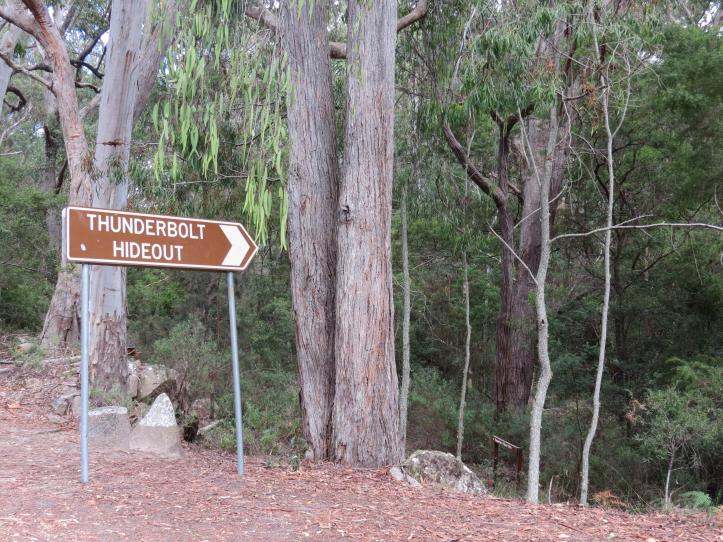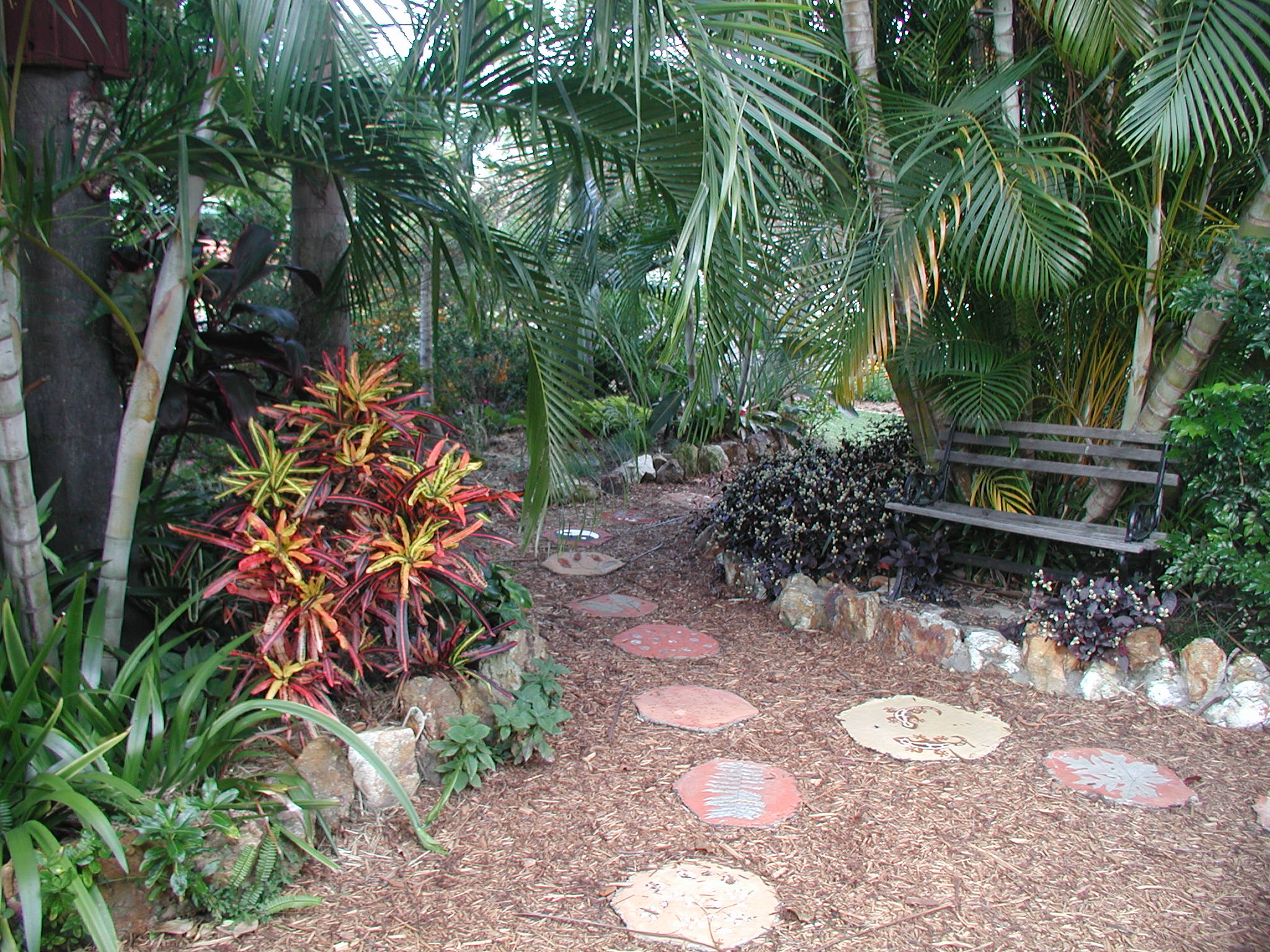 Could not resist stopping at this sign and taking a walk back into history.
Could not resist stopping at this sign and taking a walk back into history.
Times were difficult and dangerous in the 1800’s. Australia was colonised by convicts and many of these turned to crime when they either escaped or earnt their freedom. Travel could be fraught with danger. Bush rangers stalked the outback roads. Ned Kelly is a well known figure in history and so is Captain Thunderbolt. We had a brief brush with this notorious character when we found his hideout.
He was born Fred Ward, in 1835 to convict parents, worked at many stations in northern NSW in the late 1840’s, including the famed horse-stud Tocal, and his horsemanship skills soon became evident. Horsebreaking became one of his most important duties. But in 1856, at the age of 21, he is enticed to join a gang of horse thieves. They were caught and sentenced to 10 years in the notorious Cockatoo Island penal establishment, in Sydney harbour.
He is released after 4 years on a ticket of leave. But soon goes back to his bushranger ways and is caught again. This time he makes a daring escape from Cockatoo Island by swimming across the harbour. He is the only convict to escape the island penitentiary. It is now 1863. So at 28 he becomes a hardened bushranger and crowns himself with the nickname “Captain Thunderbolt”
Over the following six-and-a-half years, Ward survived by robbing mailmen, travellers, inns, stores and stations across much of northern New South Wales – from the Hunter Region north to Queensland and from Tamworth nearly as far west as Bourke. He had many hideouts but one of his more famous is this one just outside Tenterfield.  We follow the track leading through the bush and ferns.
We follow the track leading through the bush and ferns.
 Ducking under fallen trees. The huge granite boulders rear over us.
Ducking under fallen trees. The huge granite boulders rear over us. The rocks are draped with moss and ferns, then we see a narrow gap between two of the rocks.
The rocks are draped with moss and ferns, then we see a narrow gap between two of the rocks. It leads into a larger cavity.
It leads into a larger cavity.
 A family with 3 young children materialise from round the corner. It is not hard to visualise desperate men hiding out among these rocks. It now becomes much steeper and tricky to scramble over the rocks.
A family with 3 young children materialise from round the corner. It is not hard to visualise desperate men hiding out among these rocks. It now becomes much steeper and tricky to scramble over the rocks. So I decide I’ve gone far enough. The family tell me there is a good view of the road from the top of the boulders and this is one of the reasons Thunderbolt chose this hideout.
So I decide I’ve gone far enough. The family tell me there is a good view of the road from the top of the boulders and this is one of the reasons Thunderbolt chose this hideout.
The end came for Thunderbolt on 25 May 1870, at the young age of 35, after robbing travellers near the Big Rock, Ward was shot and killed by Constable Alexander Binney Walker at Kentucky Creek near Uralla. The bushranger had spent his last few hours in and about the Royal Oak Inn, close by Split Rock, at Church Gully. There is much to support a contention that his judgement at that time was impaired by alcohol.
This was a short, but interesting side trip on our way to walk up Bald Rock.




Heavens! Coming thick and fast, Pauline, but I can see why 🙂 🙂 I’ve just included part 1 in Monday. Love that shot of the family through the boulders. That was quite an adventure. Have a lovely weekend!
LikeLiked by 1 person
Im back to my more sedentary life Jo now I am back home.. weekend looking good. Rain forecast for tomorrow, the garden and me look forward to it
LikeLiked by 1 person
Great post. Really interesting read
LikeLiked by 1 person
Thanks Lesley, pleased you found it interesting
LikeLike
Enjoyed that slice of history, Pauline. And in its landscape setting.
LikeLiked by 1 person
Thanks Tish, pleased you found it interesting
LikeLiked by 1 person
Quite a character….I recall one of my Aussie colleagues commenting that ‘we’re all a bunch of crims’ in Australia…Hardly, but it is interesting to reflect on those early settlers
LikeLiked by 1 person
The ancestors made for lots of larrikins I think
LikeLiked by 1 person
😀😀
LikeLiked by 1 person
Short, but very interesting. I love reading the old tales of settlers in Australia. A hard life for many, and yes plenty of Larrikins and hardened criminals I suspect!
LikeLiked by 1 person
I think it was the criminal poms and adventurers that shaped this country, then all the other immigrants that gave it the uniqueness it has today
LikeLiked by 1 person
Interesting story and landscape.
LikeLiked by 1 person
Rugged landscape suits bushrangers
LikeLike
It does…but I like it too.
LikeLiked by 1 person
This is such fascinating history of Australia.
LikeLiked by 1 person
It certainly is interesting to come across the stories, then, of course, Google fills in all the details
LikeLiked by 1 person
Google? Have you seen the previews for the new movie ‘Winchester’. It sounds like one of the few movies I would actually like to see, but I also expect that too much of the details have been filled in to make it more interesting for a movie.
LikeLiked by 1 person
No haven’t heard of “Winchester” will check it out
LikeLiked by 1 person
It may not be of interest. It just got my attention because it is part of our local history. The sad part is that, like so much of history, it has been ‘improved’.
LikeLiked by 1 person
A perfect hideout. Next time you’re down that way there is a very good museum in Uralla that details his capture. I was lured into the museum by its warm fireplace as it was verging on snow outside.
LikeLiked by 1 person
Think we will go north in the colder weather
LikeLike
I agree my joints don’t like the cold.
LikeLiked by 1 person
Me neither
LikeLiked by 1 person
A fascinating bit of history, I wonder what makes someone decide it’s okay to live off others like that.
LikeLiked by 1 person
Maybe it is the only way they think they can survive.
LikeLike